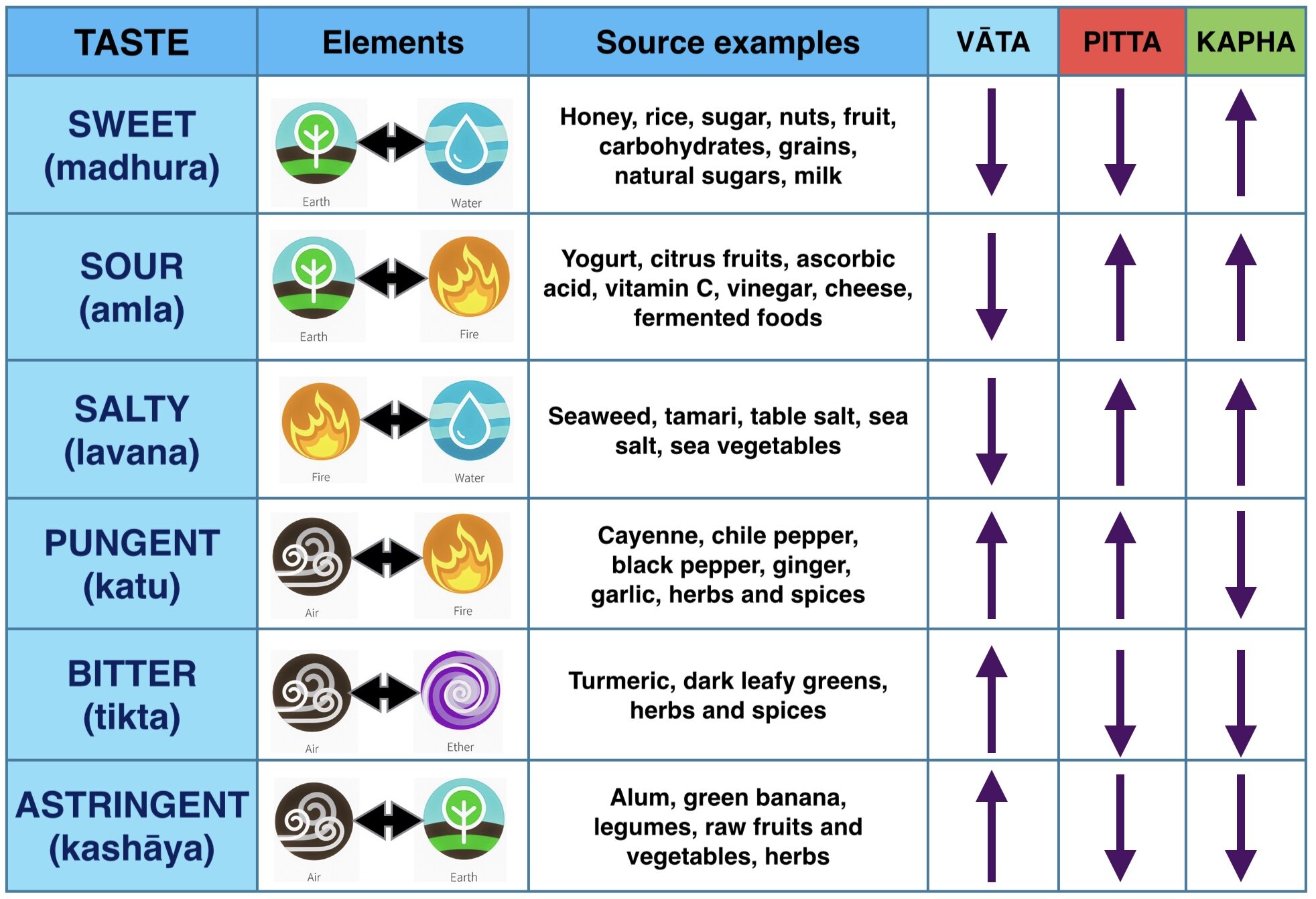The Tastes and Qualities of Food
The six tastes of food are derived from the five element influences: ether, air, fire, water, and earth.
To strengthen the doṣas, choose foods with the tastes which influence them. To reduce dosha effects, choose the other tastes.
Sweet
Derived from water and earth element influences. It increases kapha doṣa and reduces vata and pitta. Examples of foods with sweet taste are grains and complex carbohydrates, milk, butter, and cashews. Sweet taste is best obtained from complex carbohydrates and sweeteners (in moderation) so that their post-digestive effects are the result of digestion. The sweet taste of ordinary foods nourishes and builds the body. Many of the foods recommended for rejuvenation purposes are sweet when well-masticated and have a sweet post-digestive effect.
Sour
Derived from fire and earth elements. It increases pitta and kapha and decreases vata. Some foods with sour taste are citrus and some other fruits ,hard cheeses, and yogurt. Needed in small quantities.
Salty
Derived from fire and water element influences. It increases pitta and kapha and decreases vāta.Helps in maintaining mineral balance and retaining water. Can usually be derived from foods.
Pungent
Derived from air and fire element influences. Increases vāta and pitta and reduces kapha. Is in hot peppers, ginger, cumin, and some other spices. Needed for metabolism, stimulates appetite and digestion.
Bitter
Derived from ether and air element influences.It increases vata and decreases pitta and kapha. Found in spinach and some other green leafy vegetables, eggplant, and turmeric. Helpful in detoxification of the body, hence its use in some medicinal preparations when body cleansing is needed.
Astringent
Derived from ether and earth element influences. It increases vāta and decreases pitta and kapha. Found in beans, lentils, and some fruits. Helpful in maintaining tissue firmness.
Stages of Digestion and the Doshas
Kapha is predominant for the first 1‐2 hours and nourishes all bodily kapha.
Pitta is predominant for the next 2‐3 hours and nourishes all bodily pitta.
Vāta is predominant for the final 2‐3 hours and nourishes all bodily vāta.
Each stage lasts for approximately an hour.
rasāh svādvamla lavana tiktoṣaṇa kaṣāya kāḥ.
ṣad dravyam āśritās te ca yathā pūrvam balāvahāḥ
The six tastes are: sweet, sour, salty, bitter, pungent and astringent.
They are present in substances. Each one produces more strength (for the body) than the one which follows it.
Āyurvedic Sūtra






